 |
 |
 |
| |
The effect of unplanned care interruptions on the mortality of adults resuming antiretroviral therapy in South Africa: a survival analysis
|
| |
| |
Early or Late HIV Care Interruptions Double Death Risk in South Africa
IAS 2023, July 23-26, 2023. Brisbane
Mark Mascolini
Compared with people who never interrupted their HIV care, both early and late care interrupters who resumed care had about a doubled risk of dying in a South African analysis [1]. Men who interrupted then returned to care had a 40% higher risk of dying than women in this 63,421-person cohort.
Noting that few studies have assessed mortality after unstructured interruptions in HIV care,
Haroon Moolla and colleagues from the University of Cape Town set out to explore relative mortality of people resuming care after such a gap.
The analysis involved adults in South African IeDEA-SA cohorts who began antiretroviral therapy (ART) from 2004 through 2019. Researchers eliminated people without recorded CD4 counts or identity numbers. They defined care interruptions as more than 180 days without healthcare contact followed by a return to care. The study did not consider people who had an undetectable viral load when they resumed care. Early interruptions were those in the first 6 months of ART; late interruptions were those that began after the first 6 months.
The 63,421 study participants had a median age of 33.3, and 67.5% were female. Median pre-ART CD4 count stood at 229 (interquartile range 113 to 385). In this 63,421-person group, 40,828 (64%) never interrupted care and had 2587 deaths during 132,594 person-years of follow-up. The 8845 early interrupters (14%) had 427 deaths in 18,429 person-years of follow-up. And the 13,748 late interrupters (22%) had 571 deaths in 37,334 person-years.
People who never interrupted ART had the longest survival through 15 years of follow-up, followed by late interrupters, with early interrupters having the shortest survival.
Cox regression analysis adjusted for age, sex, pretreatment CD4 count, year starting ART, and cohort site identified four clusters of independent predictors of shorter survival:
Interruption of HIV care vs no interruption:
Early interruption, adjusted hazard ratio (aHR) 2.32, 95% confidence interval (CI) 2.06 to 2.61
Late interruption, aHR 1.90, 95% CI 1.68 to 2.15
Male vs female sex: aHR 1.40, 95% CI 1.28 to 1.52
Older age vs 15 to 24 years:;
35 to 44: aHR 1.37, 95% CI 1.14 to 1.66;
45 to 54: aHR 2.08, 95% CI 1.71 to 2.54;
55 to 64: aHR 3.60, 95% CI 2.86 to 4.51;
65 or older: aHR 5.76, 95% CI 4.00 to 8.29
Lower pre-ART CD4 count vs 500 or more:;
200 to 349: aHR 1.47, 95% CI 1.13 to 1.92;
100 to 199: aHR 2.07, 95% CI 1.59 to 2.70;
50 to 99: aHR 2.46, 95% CI 1.87 to 3.22;
Under 50: aHR 2.98, 95% CI 2.27 to 3.89
A sensitivity analysis that changed the threshold separating early from late interrupters consistently found a greater hazard ratio for mortality in early interrupters than late interrupters, regardless of whether the threshold was 90 days, 180 days, or 270 days. But compared with the 180-day early-late threshold used in the main analysis, a 90-day break had a lower impact on mortality and a 270-day break had a greater impact.
Haroon Moolla and colleagues cautioned that their study is limited by the assumption that interruption of care equals interruption of ART and by exclusion of many potential participants because they had incomplete data. Still, they believe their findings confirm that interruptions in care spur mortality in people with HIV and underline the dual need to retain people in care and to convince interrupters to return.
Reference;
1. Moola H, Davies MA, Davies C, et al The effect of unplanned care interruptions on the mortality of adults resuming antiretroviral therapy in South Africa: a survival analysis. IAS 2023, July 23-26, 2023. Brisbane.
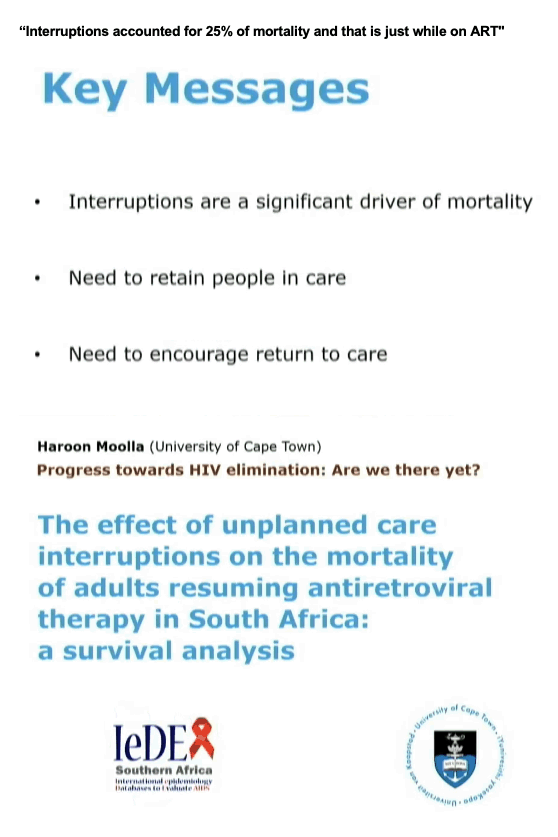
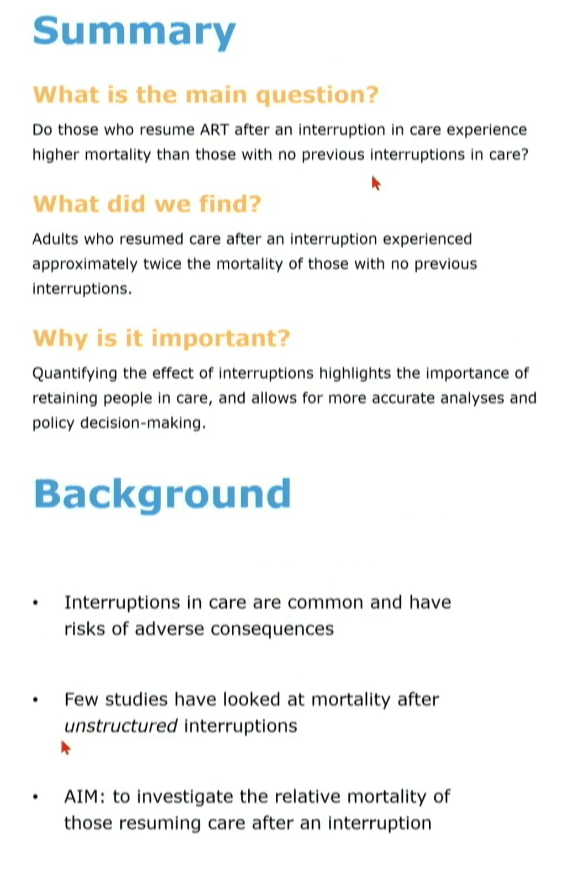
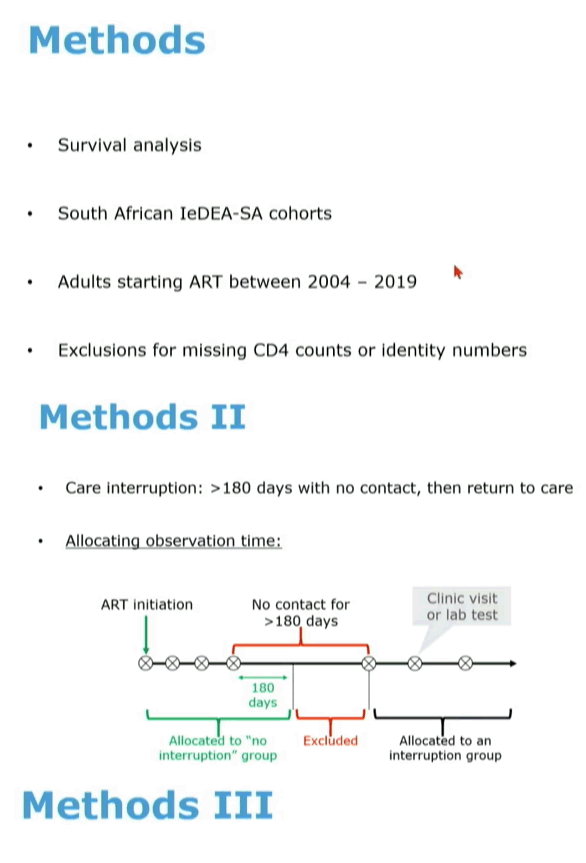
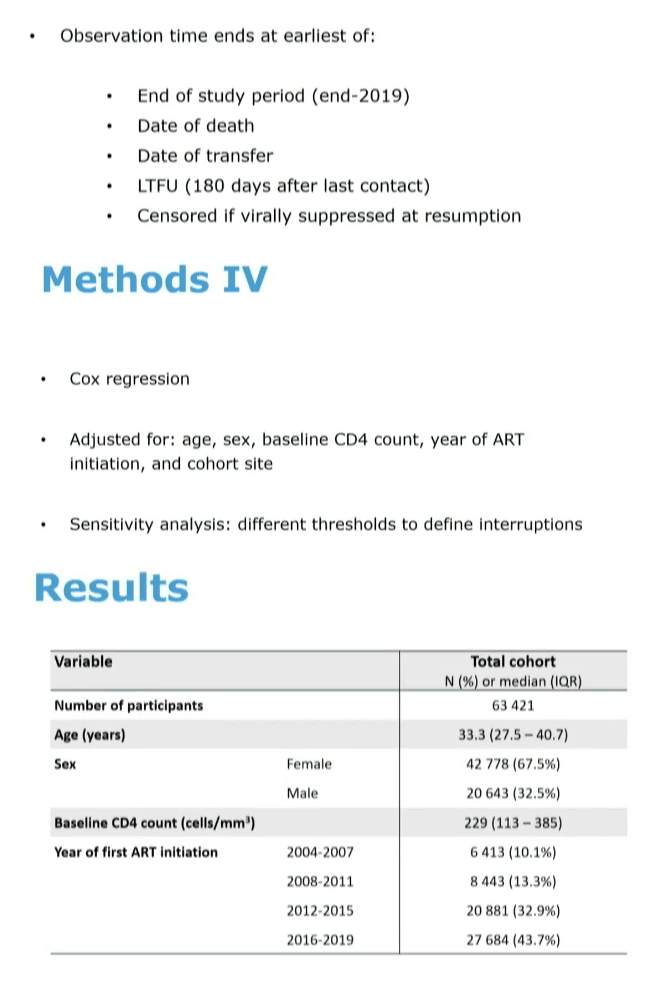

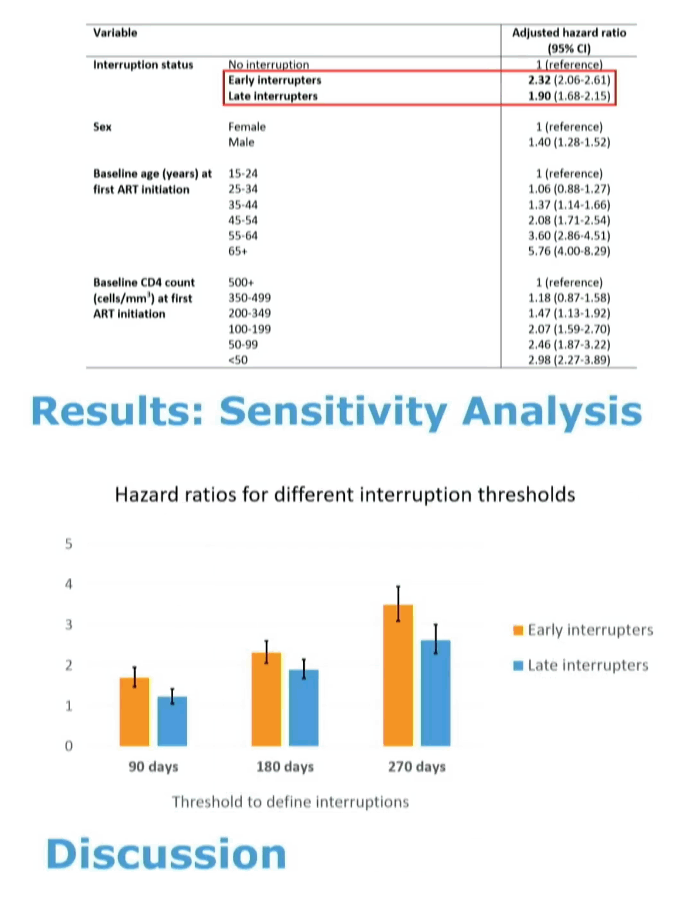
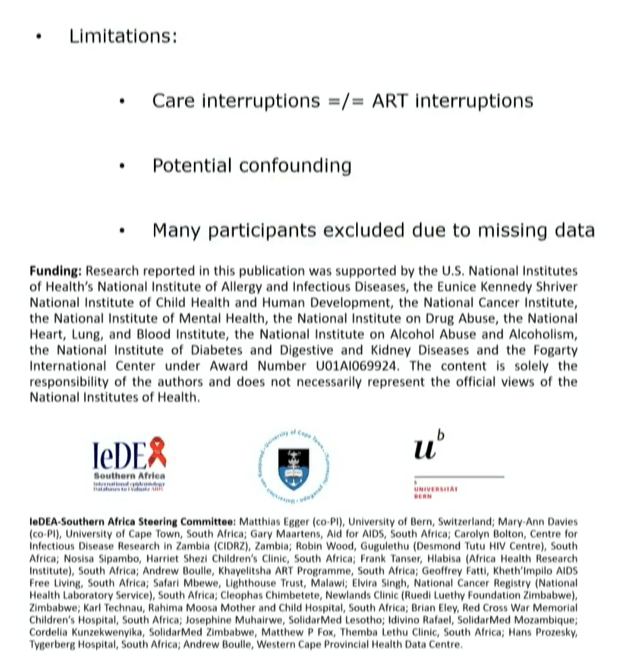
|
| |
|
 |
 |
|
|